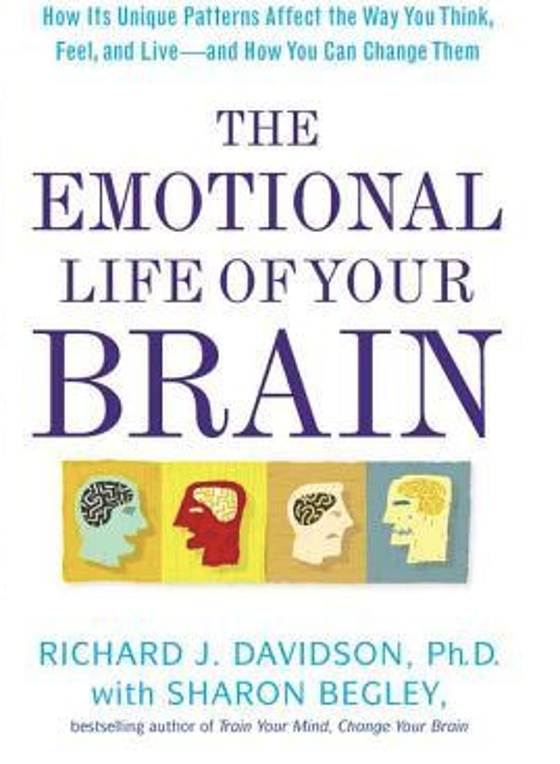I really enjoyed this book. Davidson is the founder of the Center for Investigating Healthy Minds at UW-Madison, with a focus on brain scans studying Tibetan monks while they meditate.
This book goes through six different categorizations of types of mental/emotional styles based on actual neuroscience studies:
-Resilience (how slowly or quickly you recover from adversity)
-Outlook (how long you’re able to sustain positive emotion)
-Social Intuition (how adept you are at picking up social signals from people around you)
-Self-Awareness (how well you perceive bodily feelings that reflect emotions)
-Sensitivity to Context (how good you are at regulating your emotional responses taking into account the context in which you find yourself)
-Attention (how sharp and clear your focus is)
Davidson provides an in-depth history of his work in the book, lays out the details of the emotional types and how they work, and finally provides a brief introduction into how people can work to modify their emotional styles.
I find this book beautifully aligned with Buddhism, with the Dalai being a strong supporter of Davidson’s research.
Quotes from the book
“In short, the brain has the power to recruit healthy neurons to perform the function of the damaged ones. Neuroplasticity enables the brain to reassign jobs.”
“As a result, nature has endowed the human brain with a malleability and flexibility that lets it adapt to the demands of the world it finds itself in. The brain is neither immutable nor static but continuously remodeled by the lives we lead.”
“In my research, I have discovered practical, effective ways to do so. I’ll explain more in chapter 11, but for now let it suffice to say that you can modify your Emotional Style to improve your resilience, social intuition, sensitivity to your own internal emotional and physiological states, coping mechanisms, attention, and sense of well-being. The amazing fact is that through mental activity alone we can intentionally change our own brains. Mental activity, ranging from meditation to cognitive-behavior therapy, can alter brain function in specific circuits,”
“But the scientists had the other half of their group of volunteers only imagine playing the notes; they did not actually touch the ivories. Then the researchers measured whether the motor cortex had noticed. It had. The region that controls the fingers of the right hand had expanded in the virtual pianists just as it had in the volunteers who had actually played the piano. Thinking, and thinking alone, had increased the amount of space the motor cortex devoted to a specific function.”
“you will think about someone you care about, such as your parents, sibling, or beloved, and will let your mind be invaded by a feeling of altruistic love (wishing well-being) or of compassion (wishing freedom from suffering) toward them. After some training you will generate such feeling toward all beings and without thinking specifically about someone. While in the scanner, you will try to generate this state of loving-kindness and compassion until an unconditional feeling of loving-kindness and compassion pervades the whole mind as a way of being, with no other consideration or discursive thoughts.”


